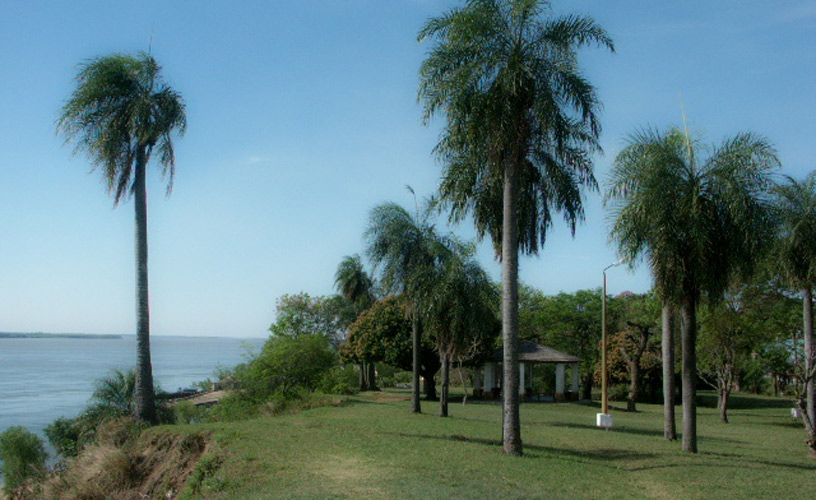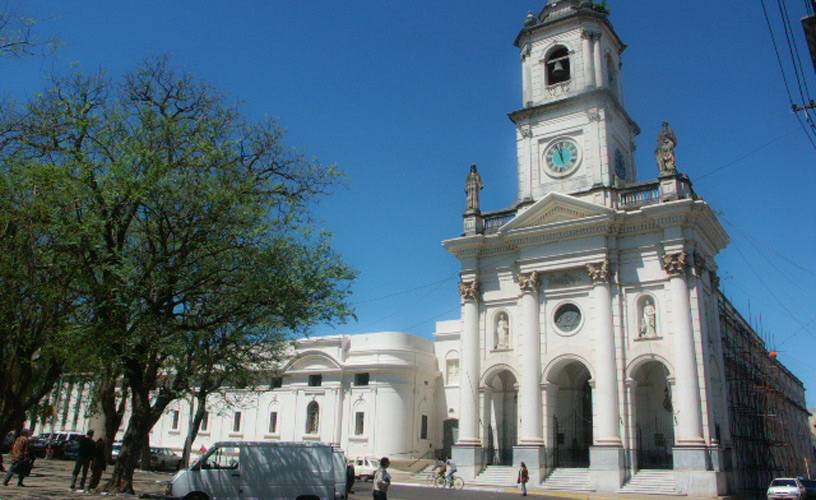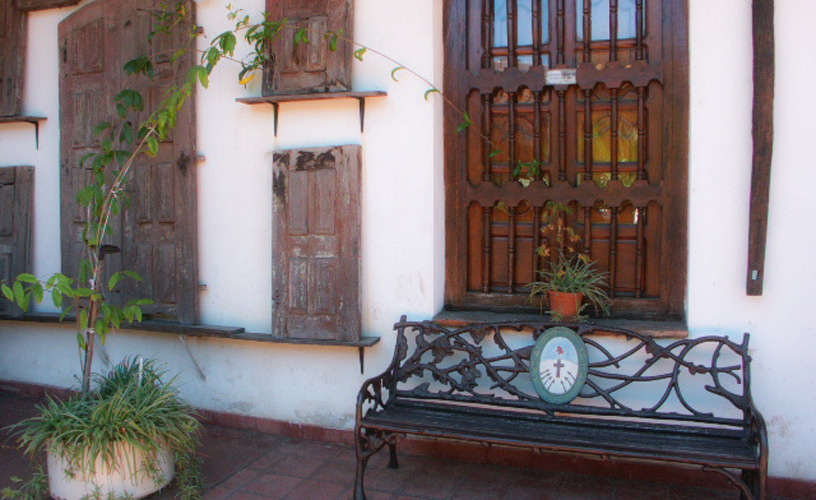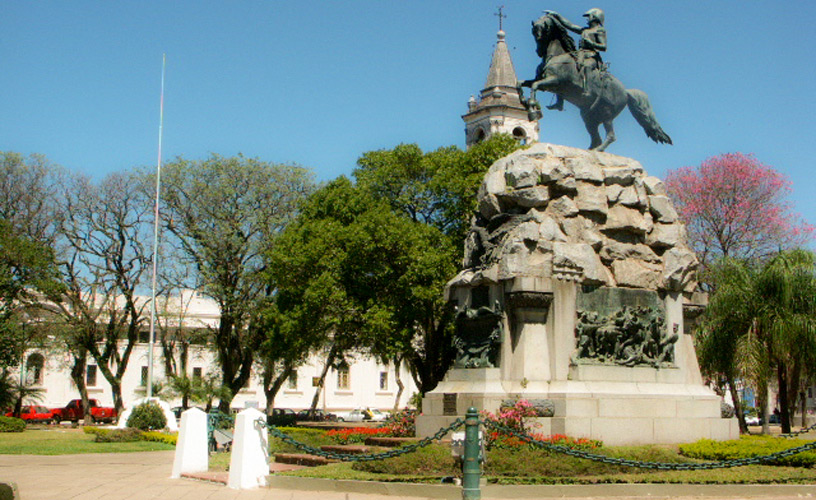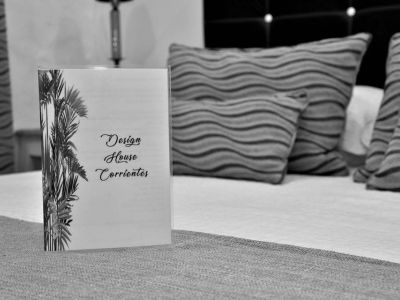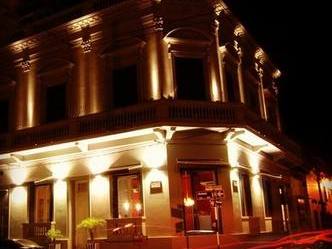We started the tour at the Church and Convent of Saint Francis located on Mendoza Street between De la Quintana and Plácido Martínez Streets. This building is from 1638 according to Capitular Records of San Juan de Vera de las Siete Corrientes City, being Saint Francis Solano its Patron. As you stand in front of the building, you can observe its eclectic style in the columns of the Portico which are inspired in Bernini´s work on Saint Peter´s Basilica in Rome.
At the back of the church, on Italia Avenue and Quintana Street, the old convent is located, having walls, ceilings and windows of leather kept since XVI and XVII centuries.
We go on along Mendoza Street to the North until Vera Avenue and Aragón Street. We pass by the front of the building belonging to Prefectura Naval Argentina ( Argentinian Naval Prefecture), we turn right into the Avenue and ride for three blocks until Mitre Park getting through the old Bridge of "la Batería".
City Tour around Corrientes Capital City
In this place, San Pedro Battery positioned . It was commanded by General Mitre and acted in decisive moments in the War of the "Triple Alianza". Inside, there is a monument to the "Cautivas", work by Luis Perlotti which was inaugurated in 1941. This sculpture group represents the five women from Corrientes who were captive and hold hostage during that war, being only four of them released alive in the end.
As you go around the park, you can get until Punta Mitre, one of the seven points of land and stone that come out on Paraná River and which gave its name to the city- San Juan de Vera de las Siete Corrientes. From there, you can observe the full installations of the Yachting Clug with its yellow beaches and mooring with middle-sized boats.
We rode back along Vera Avenue to San Martín Coastal Avenue and passed by General San Martín National School. Further ahead, the statue of the taragüi, work by Antonio Puyau that was given the First Prize in the National Art Room.
taragüi was the name given by natives to the town founded by Don Juan Torres de Vera y Aragón on April 3rd, 1588 in Arazatí Point.
We turned left onto Chaco Street and rode for eight blocks until 3 de Abril Avenue while we observed the Spanish and autochthonous colonial styles of the houses in the area.
On this Avenue, there is a monument that outstands, it was done to pay homage to Carlos María Alvear by sculptress Lola Mora from Tucumán. We turned onto Buenos Aires Street and went ahead until De La Cruz Square where we stopped to visit the church that contains "The Cross of the Miracles" which was declared National Historical Monument in 1942.
The church was made by Engineer Juan Coll from Tucumán who did further studies in Italy and brought the new architectural style called "Italianizing".
In old times, the church had a great cupolaand two towers that were later demolished since, due to a mistake in the construction, turned out of proportion because they were too big and heavy. Since 1915, they are shorter. Inside, the main and lateral naves outstand having Medieval reminiscences and the lateral chapels having Gothic Altars.
Opposite the church, De La Cruz Square is located, in the center of which the Monument in honor to Dr. José R. Vidal and to the physicians who fell on duty during yellow fever . The monument is made of bronze and the base is made of red sand stone taken from Mercedes quarry ( Corrientes).
We went on the tour around the center of the city, took Buenos Aires Street to the North until Downtown Corrientes.
On 25 de Mayo Street, there is a Square called after it which is surrounded by old buildings from the period between 1880 and 1910, most of them are currently used by Public Divisions such as the Government House, the Rectorate of the UNNE, the Church of La Merced, Sarmiento School and the Police Station.
Inside the Church of La Merced, there are four cedar confessional boxes which were carved by natives belonging to Jesuitical settlements and are considered real historical treasures- they are believed to have been taken from San Ignacio Miní. The Lady wears the habit of the Order of Our Lady of Mercy with the band of the Argentinian flag since Belgrano declared her General of Argentinian Army.
We went along 25 de Mayo Street until San Juan Street and observed the front of Juan de Vera Theatre, being one of the most important ones due to its acoustics. Among the shows that take place here, we can mention own productions and guests casts of all genres- music, ballet, theatre, children´s shows, cinema and video cycles, didactic concerts, courses and lectures.
We go on along San Juan Street, crossing through the area of banks, Don Bosco School, María Auxiliadora Church and the Central Market. We turn onto Yrigoyen Street, ride four blocks until the Cathedral where we observe its Italian Renaissance style in its portals placed on Corinthian columns that are also found inside the building. Appart from that, there are two towers that end in little cupolas covered by French Blue Majolicas.
Opposite the Cathedral, there is a Square where the Monument to Juan Bautista Cabral- the Argentinian hero that saved Gral. San Martín´s life in San Lorenzo Battle.
Junín pedestrian street starts at the square and is six blocks longuntil Salta Street where we finish the city tour and where we can get a gift to remember our stay at this city.
Marcelo Sola
Marcelo Sola
